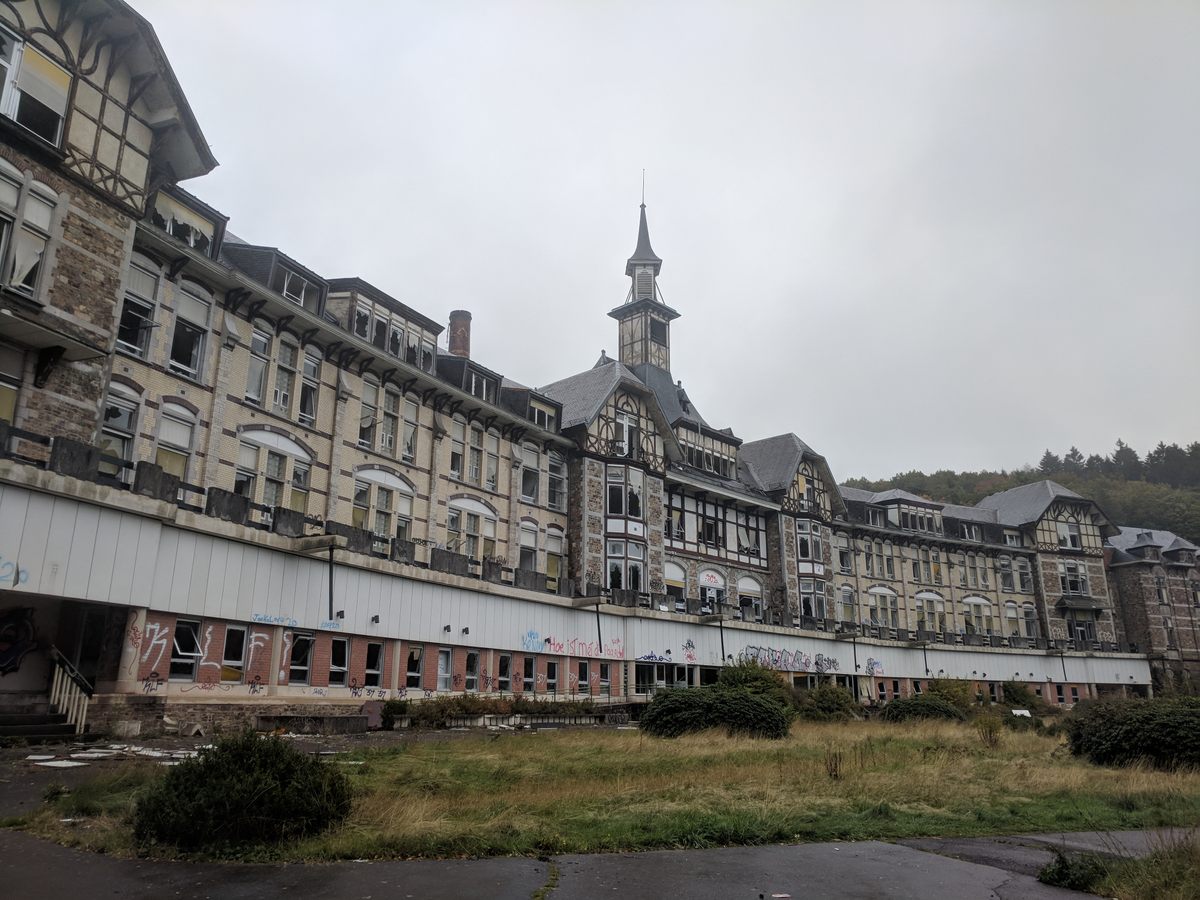The Sanatorium du Basil , now long abandoned, began its journey in 1900 under the guidance of Ernest Malvoz, head of the bacteriological lab in Liège. Its unique concave design, facing south, was specifically crafted to maximize heat, air, and light—key elements in the battle against tuberculosis back then. Today, nature is gradually reclaiming this once-vital medical facility, adding an eerie yet captivating aura to its storied walls.

Sanatorium du Basil welcomed its first patients in 1903 and continued to expand in the following years. Right from the start, all rooms had electricity, thanks to an on-site power plant that, by the 1920s, also powered the surrounding village. After World War II, the city of Liège added another pavilion with workshops focused on patient rehabilitation. This growth highlighted the sanatorium’s dedication to comprehensive patient care and medical innovation.

The precise date of the main part of Sanatorium du Basil’s abandonment remains unclear. However, between 2010 and 2013, the property briefly served as housing for asylum seekers. Today, a small section remains operational as a nursing home.
Visiting the sanatorium is an adventure into the unknown. A path, now overgrown, meanders from the main road, guiding curious explorers to the heart of the property. Approaching the main building this way, one is immediately captivated by its hidden beauty amidst the surrounding foliage—a quiet tribute to its rich history.

Exploring
Approaching Sanatorium du Basil reveals more details emerging from the shadows. The deteriorating sunscreens suggest the building’s past grandeur. Peering inside, glimpses of the rehabilitation baths where patients once practiced walking, remnants of the electrical infrastructure, and scattered desks and machinery are visible. These artifacts provide a poignant glimpse into a place that once teemed with the hopes and challenges of its numerous inhabitants.













Also Recommended: The Abandoned Asylum of Volterra Closed In 1978 And Forgotten

